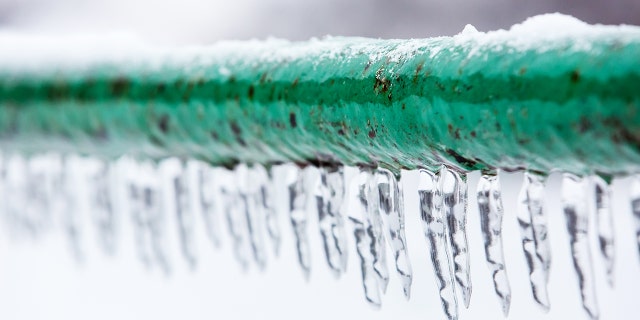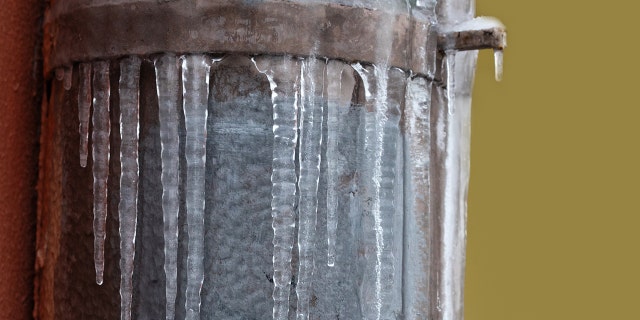

These floods can be devastating to a home, and can be extremely expensive for a homeowner or renter.
FROZEN PIPES? THESE ARE THE TOP 10 STATES FOR COSTLY WINTER WATER DAMAGES
The insurance company State Farm paid more than $181 million in 2022 for claims related to damages from frozen pipes, with the average claim costing over $20,000, the company reported in a recent news release.
Michael Davis, a plumbing and HVAC expert and writer at the website PlumberTip, shared some dos and don'ts with Fox News Digital when it comes to dealing with frozen pipes.

Frost may accumulate on the frozen part of the pipe, a plumbing expert told Fox News Digital. (iStock)
Here are his tip tops.
"Locate the frozen section of the pipe," Davis told Fox News Digital.
WHAT TO DO IF YOU'RE TRAPPED IN YOUR CAR DURING A SNOWSTORM
"You may be able to identify the frozen section by looking for frost on the outside of the pipe or feeling for a section that is colder than the rest of the pipe."
"If the frozen section is visible, apply heat to the area using an electric heating pad, a hair dryer,or a portable space heater," said Davis.
WINTER WEATHER ‘GO BAG’ COULD SAVE LIVES, SAY SAFETY PREPAREDNESS EXPERTS
This advice, however, comes with a pretty big caveat.

Using a blowtorch to thaw a frozen pipe could damage the pipe. (iStock)
In addition to being dangerous, using a blowtorch to melt a frozen pipe may actually damage the pipe, Davis explained — making matters much worse.
"If the frozen section is not visible, or if you are unable to access it, turn off the water supply to the affected pipe," said Davis.

A plumber should be called if water still is not flowing several hours after a homeowner attempts to thaw a pipe — or if a pipe bursts. (iStock)
After shutting off the water supply, a person then should turn on the faucet to allow for the water to drain as the pipe eventually thaws, he said.
If it has been several hours since the pipe was thawed and water is still not flowing, or if the pipe bursts, Davis recommends calling in a plumber.
There are many things to do ahead of a cold snap or blizzard to prevent plumbing disasters, said Davis.
"To prevent frozen pipes in the future, consider insulating exposed pipes and keeping the thermostat set to the same temperature both day and night," he said.
And if the forecast shows temperatures falling below 32 degrees, "letting a slow trickle of water flow through the pipes" can prevent them from freezing, said Davis.
